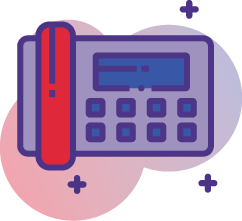
According to the book, Why only humans weap: Unravelling the mysteries of tears, the average man cries six times per year, while the average woman cries 30-64 times a year. I wasn’t sure how I felt about those numbers because I am not an outwardly emotional person and don’t feel that I cry a lot and certainly not 30-64 times a year.
The best way to validate any random statistic is through my social media! So, on Friday, I asked my Fact or Fiction question on all my social media channels about the above statistics.
What I heard back not only surprised me, it made me think.
The responses were, as expected, all over the place. Some agreed, admitting they cried easily and frequently. Some were like me and felt they really didn’t cry often. Both men and women answered.
However, a few answered that they would often cry when they are angry. Not because they are sad, but more because it was how their body expressed emotion.
That was something I could relate to! Do you ever get so angry that your eyes leak? The anger spills over into frustration, and tears express the frustration? Then you get angrier because you are crying, and it causes you to cry more? It is a vicious cycle for sure.
[ctt template=”3″ link=”QXVB0″ via=”yes” ]Do you ever get so angry that your eyes lead? The anger spills over into frustration, and tears express the frustration? Learn to end the vicious cycle here.[/ctt]
I have certainly been there. Tears of sadness were the furthest thing from my mind, yet my body insisted on crying. When I was thinking about how many times per year I cried, these situations never came to mind. But yet, they do happen far more than I’d like to admit.
[ctt template=”3″ link=”d72d8″ via=”yes” ]Seven tips on what to do when you cry when you are angry.[/ctt]
Here is how I handle those tears of frustration:
1. Give yourself permission to cry. You know you aren’t sad. You know the tears are an outward expression of anger or frustration. If this is how you express emotion, give yourself permission. The more you try to suppress the tears, the more you are likely to get frustrated when they start to flow, which creates that cycle of anger and tears.
2. Be prepared. If you know you are about to enter an emotional discussion, be prepared for the tears. You don’t want them to surprise you! Bring a tissue or many if needed. When you are prepared, the tears won’t come as a surprise (or annoyance) to you, and you can deal with them.
3. Acknowledge it to others. If you feel it will help you, warn others that you are aware that one of your annoyances is that you cry when angry. Say to others, “Just because I’m crying right now does not mean I am sad or upset. It is just how my body expresses emotion,” and then keep on saying what you need to say. You can warn them in advance if you feel it will help, but once the tears start, acknowledge them so you can move forward.
Once you’ve identified the elephant in the room, it makes it easier to acknowledge the fact you know you are crying but that you intend to continue the conversation or argument. It is not a weakness; it is instead an annoyance that you can admit and acknowledge.
4. Take deep breaths. Often our adrenaline causes us to want to speak quickly when we are emotional. Remind yourself to take a deep breath, maybe even count to five before you start to talk. When you rush through your conversation because you want to avoid the tears, you are causing the adrenaline to heighten your reactions. Take a deep breath when you feel the tears start to build. Take a deep breath when the first tear spills over. Take a deep breath and continue as needed.
5. Maintain eye contact. Our eyes are the windows to the soul, and when we feel a surplus of emotion (frustration, anger, sadness, etc.), we often look away from the person we are speaking to as we don’t want to absorb their emotions on top of our own. Maintain your eye contact.
Looking at the ceiling makes it look like you are rolling your eyes. Looking at the floor makes it look like you are being chastised or dismissive. Look at your conversation partner right between the eyebrows, about one inch above the center of their nose. If you are far enough apart (not in each other’s face), they will not be able to tell that you aren’t making eye contact (it will look like you are), and it will allow you to maintain an emotional barrier to their emotions. Looking away potentially causes your conversation partner to misread your reactions in a negative way.
6. Wiggle your toes. I know that sounds weird, but your conscious mind needs to be engaged when you are wiggling your toes. You can’t wiggle them subconsciously. Go ahead and try. As soon as you start thinking about something else, your toes stop wiggling. When your conscious mind is engaged, it cannot constantly remind itself, “Don’t cry. Don’t cry. Don’t cry.” It shouldn’t be noticeable, and it gives you a slight separation in focus. You can still hear. What you can’t do is reinforce a negative action.
7. Speak positively to yourself. Your subconscious mind cannot interpret a negative instruction. When you say, “Don’t cry,” your subconscious mind hears, “Cry.” The don’t becomes a do.
Say things such as, “You’ve got this,” or “Keep going.” Keep your self-talk positive.
Those tears of frustration don’t count on my personal list of how often I cry, but I know that many situations cause those tears to flow not from sadness but instead from frustration. By implementing these steps, I’ve learned to keep the tears on the inside more often than on the outside.
Good luck!









